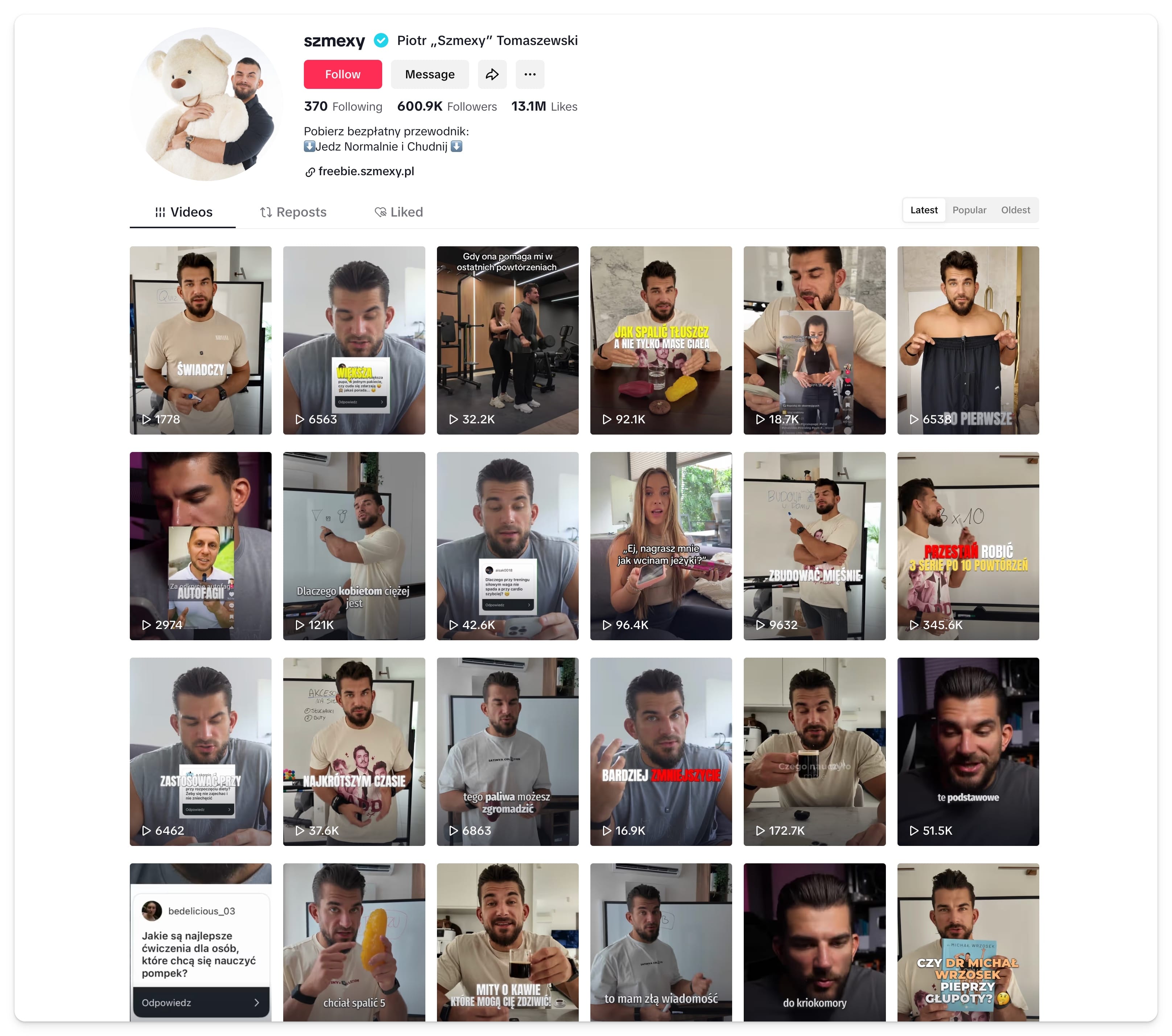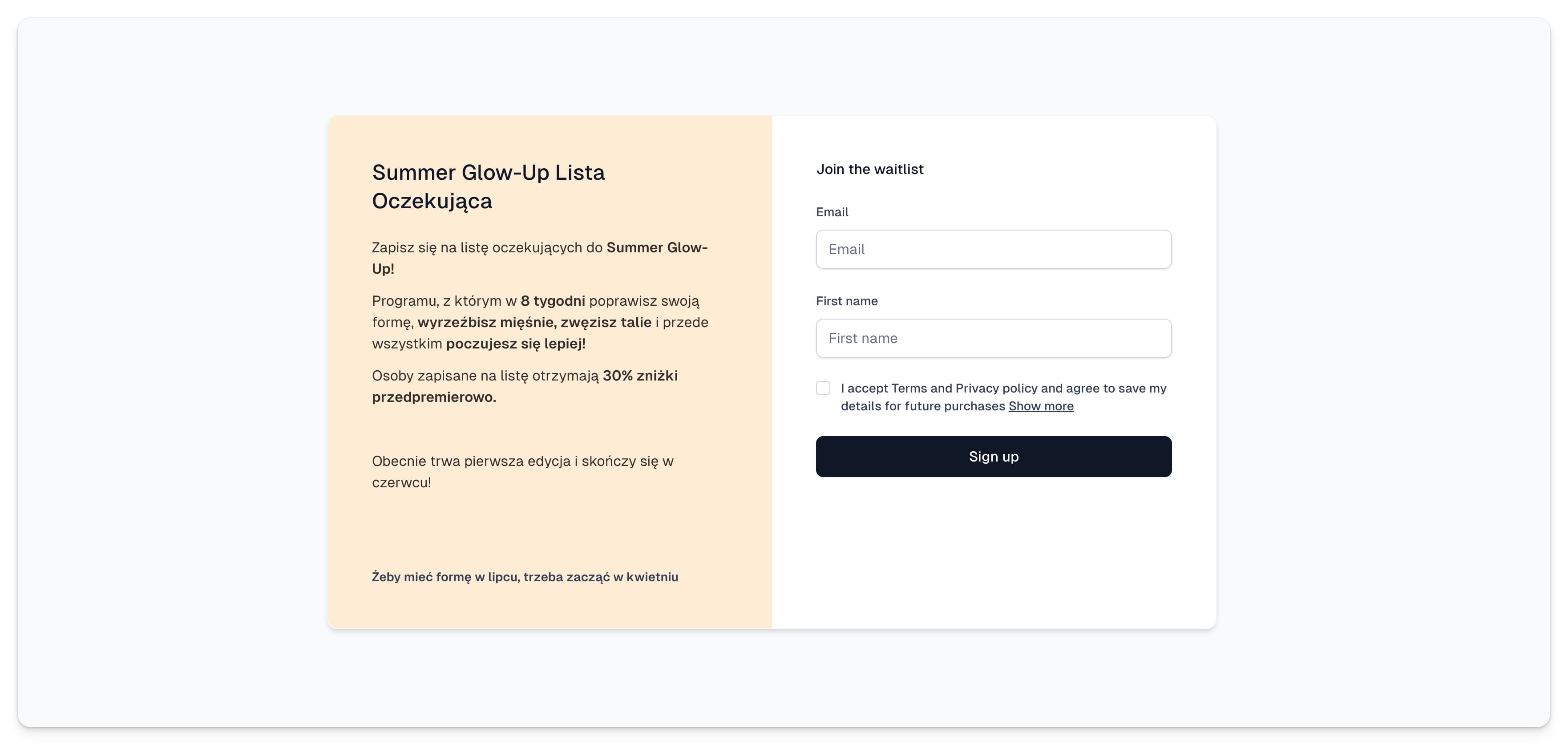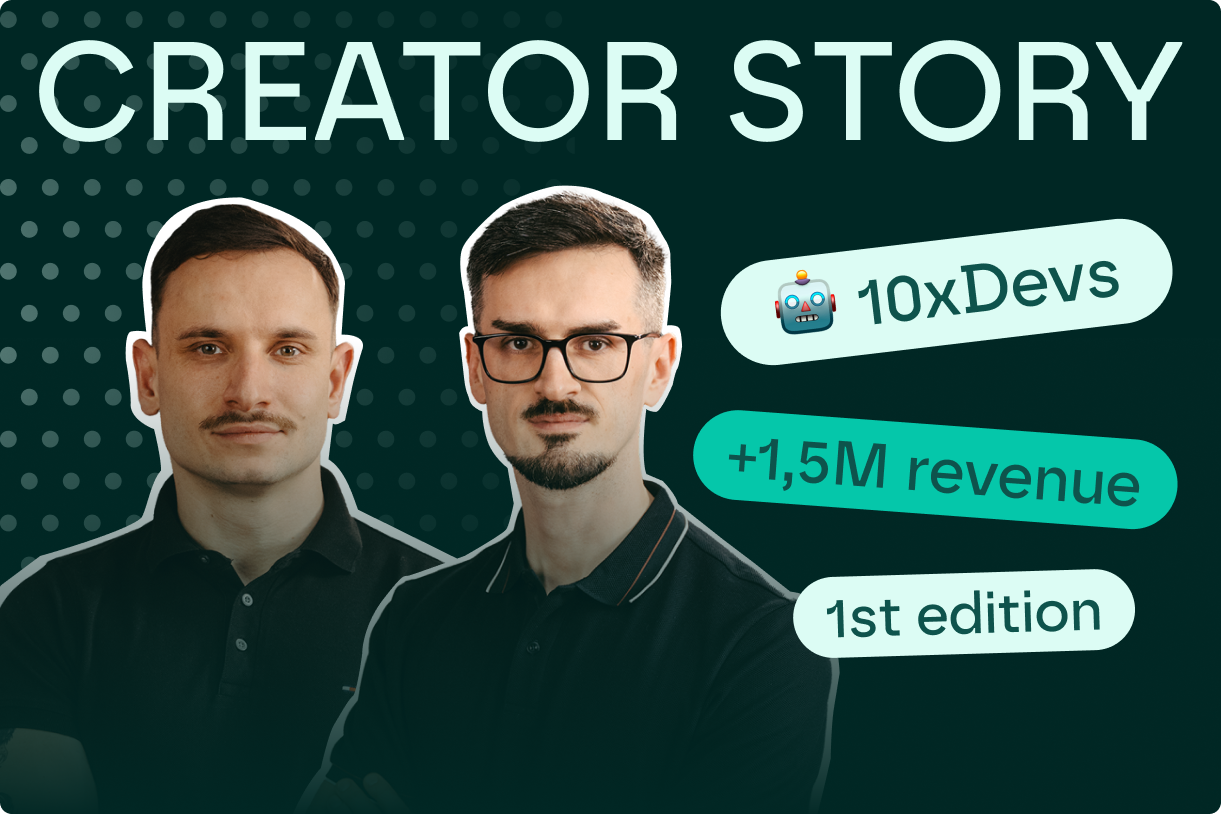Piotr 'Szmexy': From 1:1 coaching to selling e-books and courses
How Piotr went from maxed-out coach to digital creator with a scalable, freedom-first business.

“At some point, I ran out of space for new clients. I didn’t want to raise my prices or turn anyone away. That’s when I thought, ‘I need to create something that allows me to earn without being glued to my computer all the time.’”
Piotr Tomaszewski, known online as Szmexy, started out as an online personal trainer. Fast forward nearly a decade, and his e-books and courses now bring in most of his income, allowing him to run a business that offers independence, scalability, and freedom.
His story highlights how well-designed digital products – rooted in the real needs of a community – can replace the time-consuming grind of 1:1 work. Plus, keeping sales tools simple makes a world of difference.
From no time to his first e-book
For several years, Piotr worked as an online coach, crafting personalized training plans. Eventually, he filled his schedule and couldn’t take on more clients. That’s when it hit him – his business model had some serious limitations.
“I could’ve raised my prices, but I was young and ambitious, and I didn’t want to exclude anyone. Instead, I thought, ‘Maybe I can create something that helps clients get results on their own – without my direct help.’”
And that’s how his first e-book came to be – a comprehensive guide that empowered clients to train independently. It was 2016, and Piotr suspects his e-book was one of the first of its kind in Poland’s fitness market. He launched it through a simple WordPress site, and it turned out to be a hit.
After a couple of years, Piotr fully stepped away from 1:1 coaching and focused on expanding his digital offerings. Sure, he lost some clients who wanted direct contact, but he gained something even more valuable: freedom.
“I can take off for a month and not have to work. I know trainers who juggle a hundred clients and can’t find a single day off. For me, the choice was clear.”
From first e-book to a proven system
Creating the first e-book took Piotr four months – he was still a full-time student at the time. The next ones came together much faster, thanks to his new role as an entrepreneur.
“At first, I had no clue how to start. I made a table of contents and then expanded each section. By the time I wrote my second e-book, I was in business mode – I whipped it up in a month. It was about 200 A4 pages, and I wrote for several hours every day.”
As time went on, Piotr developed a system. He could reuse parts – like instructions – across products, which cut down on his work time. Nowadays, creating an e-book takes just about 15–20% of the entire process; the rest is all about marketing, promotion, and sales.
Why his products hit the mark

From the start, Piotr focused on building a community – first on YouTube, and later on Instagram and TikTok. Today, over half a million people follow him on TikTok alone. This emphasis on audience-building has helped him design products that really resonate.
“I worked with hundreds of people one-on-one, so I saw the recurring problems. Plus, before launching my first e-book, I ran a survey with over 1,000 people to gather specific data. I knew exactly what they needed.”
According to Piotr, that’s where the real key to success lies. It’s not just about having the knowledge – it’s about meeting a genuine need.
“If a topic only affects a handful of people, there’s no point in writing an e-book about it. That should be handled individually. Creating a product for a niche takes more time, requires more research, and the potential customer base is just too small to make it worthwhile.”
A faster and more effective way to sell
Initially, Piotr sold through WordPress. But he soon noticed something troubling – lots of people were abandoning their carts before checking out. So, he started searching for a solution and discovered Easycart. His inspiration came from another creator’s site – Jakub Roskosz.
“I saw that his product and cart were on the same page. No need to fill out a bunch of info; payment took just a few clicks. Mine was different – and it showed in the results.”
After testing Easycart, he decided to launch his next course entirely through our platform – without integrating it with WordPress. The outcome? Better than expected.
“With WordPress, any changes required a developer, a budget, and time to ensure everything worked. Here, I do it all myself. Launching and managing sales is super easy and quick – it worked right away.”

A 15–20% conversion boost
Piotr estimates that switching to Easycart boosted his conversion rate by 15–20%.
“My best average result is now a 10% conversion from cart to purchase. Those were people who moved from the landing page to the cart. I also tried selling directly from the cart, but there, the conversion rate was only 2%.”
For Piotr, it all boils down to the product. Simple, affordable offers can be sold directly through the cart. More expensive ones require a longer process and additional information.
Another smart move? When a specific program wraps up, Piotr automatically launches a waitlist. This way, anyone interested can sign up and get notified about the next edition.

Next step? An app
Even though his digital products are selling like hotcakes, Piotr is already thinking ahead – he wants to create his own fitness app.
“E-books are awesome, but they have their limits. An app offers so much more: reminders, stats, personalization. Plus, everything works on your phone, and today, 70% of my YouTube views come from mobile devices.”
Piotr has been keeping an eye on trends in foreign markets and sees more fitness creators investing in apps. To him, it’s the natural next step and another chance to gain a competitive edge.
Key takeaways for digital creators
Piotr not only built his own system but now helps others – mainly trainers and nutritionists – get their start in online business. The lessons he’s learned are surprisingly straightforward and super practical.
- Keep it simple at the start. You don’t need a complex tech setup, a team, or fancy automation on day one. Just a straightforward product, a quick sales tool, and client interaction. The fewer barriers you have, the better your chances of getting started.
- Hold off on the website. “I definitely wouldn’t rush into building a website. Most sales happen through social media these days. A website is often an unnecessary expense and a waste of time.”
- Know your audience before creating a product. Before writing his first e-book, Piotr gathered data from over 1,000 people and drew on years of client experience. That’s how he knew his product would meet a specific need.
- Create for a broad audience, not just a niche. Digital products should tackle problems that many people face – only then do they have the potential to scale and sell.
This approach is exactly what helped Piotr build a scalable business around his knowledge, experience, and community trust. His story shows that you don’t need a big team or a flashy website to succeed in online sales. You just need the right tools, a solid understanding of your audience – and the guts to do things your own way.
Learn more about Piotr's work here: https://ebooki.szmexy.pl/
Related articles
Ready for more? Check out these related articles that will keep your momentum going. They’re packed with easy-to-follow tips and tricks to help you supercharge your digital goods business.
Take it easy with Easytools
Focus on creating, and let Easytools handle the behind the scenes work.





